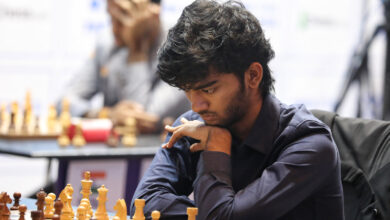China’s new generation emerges at the US Open

Tennis is a sport of fledgling popularity in China. This past decade, Li Na performed at the highest level, winning the 2011 French Open and 2014 Australian Open and subsequently reaching World No. 2. But the players the country has produced since is proof enough to suggest that Li Na’s success was an outlier, as opposed to an institutional shift.
Recently, Chinese tennis has been under the scanner for all the wrong reasons. Peng Shuai, arguably China’s most successful player since Li Na, accused Zhang Gaoli, a high-ranking Chinese official and former Vice-Premier of the country, of coercing her into having sex in a Weibo post last year. The post was taken down later and the Chinese government was accused of censoring her.
Subsequently, concern about her well-being spread as she was not heard or seen publicly in several weeks. She later came out claiming the ordeal to be a misunderstanding and even had a meeting with the International Olympic Committee (IOC). But concerns about her safety prevail even today, with many alleging that she is not speaking freely, without intimidation.
From left Protesters Will Hoyles, 39, Caleb Compton, 27, and Jason Leith, 34, who all work for Free Tibet pose for the media in T-shirts reading “Where is Peng Shuai”, at the Wimbledon Tennis tournament in London, Monday, July 4, 2022. (Photo: AP)
And while the controversy surrounding Peng Shuai dominated the narrative around the sport in China, a new generation of players have emerged, showing their best at the US Open.
Of the 64 singles players that have advanced to the third round at Flushing Meadows this year, five have come from China, the joint second-highest alongside France, Spain, and Russia. The United States dominate the l with 13, but as the host nation they also received the most wildcards and qualifying spots.
While occupying the place amongst strong tennis nations, most of China’s stars come from the newer generation. Of them, the only men’s player is Wu Yibing, the first man from his country to reach the third round of a Major since 1946.
The 22-year-old has emerged as a fan favourite in New York this week, his likeable personality is aided an immensely watchable game, built around clean ball-striking and baseline aggression. He is a former US Open juniors champion and has risen 1000 places in the rankings winning 32 of his last 36 matches.
Wu’s journey may be over soon. He takes on World No. 1 and defending champion Daniil Medvedev on the Arthur Ashe Stadium late on Friday, and it may be a hurdle too high, but he’s undoubtedly earned his place on the stage.
The Fab Four Chinese women
A majority of China’s top players come in the women’s side, and their ‘Fab Four’ have dominated the US Open this year, more than any other country.
The countries with the most players in the US Open third round:
United States of America
13
China
5
Russia
5
Spain
5
France
5
Of them, Wang Xiyu caused the biggest upset, overturning a one-set deficit to knock out third seed Maria Sakkari. Shuai Zhang is the highest-ranked and most experienced, at World No. 36, and has had a relatively straightforward path this week, and Yue Yuan is the biggest surprise, coming through qualifying having not dropped a set in five matches. She takes on eighth seed and local favourite Jessica Pegula on Thursday.
The most exciting of the lot is undoubtedly Zheng Qinwen. The 19-year-old has taken the tennis world storm this year, rising to 39th in the world rankings, but more importantly, having an excellent Slam year. She reached the second round at the Australian Open – her first Major – and then went into the second week at the French Open and the third round at Wimbledon. At both summer slams, she was defeated the eventual champion.
At Roland Garros in particular, Zheng was in excellent form, and her 7-6,0-6, 2-6 loss to Iga Swiatek was as hard as the Pole was pushed in her 37-match winning streak. She got even more love after she was vocal about how menstrual cramps derailed her game, without which she may have won. A potential rematch of the encounter is on the cards in the fourth round in New York, and the way the duo are playing, it is looking likely.
The quartet of women’s players, alongside Wu, will look to inspire a generation in China to take up tennis and to build the sport’s influence in the country. But they will not get to soak up the adulation at home.
In the aftermath of Peng Shuai’s apparent disappearance, WTA chief Steve Simon was resolute in his stance, claiming he will not rest until he gets full assurance that the 35-year-old is speaking with full autonomy. Unconvinced, he took the step of cancelling all 10 WTA events that take place in China, including the year-end championships that were held in Guadalajara, Mexico last year. The men’s Masters 1000 event, one of nine, scheduled to take place in Shanghai, also stands cancelled.
They may not get to showcase their talents at home, but at the US Open, China’s new generation of tennis stars are stepping up on the biggest stage. The world will take notice.







